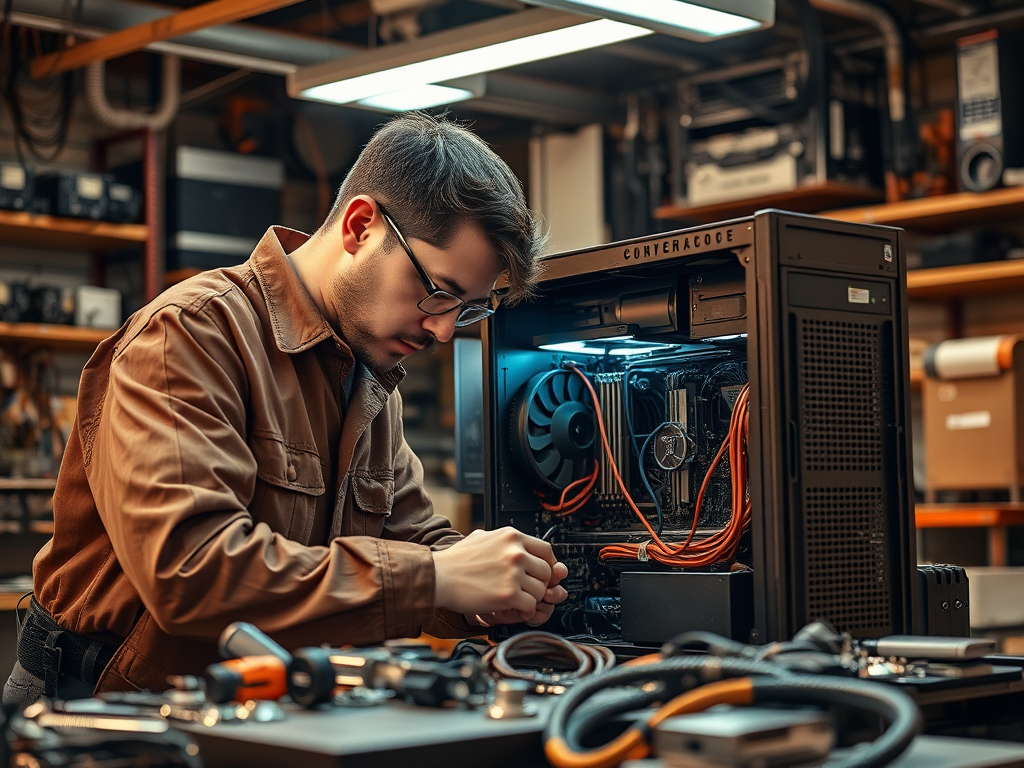The digital landscape is filled with complexities that can lead to a myriad of computer issues. These problems not only disrupt daily tasks but can also hinder professional and personal productivity. Understanding the most common malfunctions can save you time, money, and frustration. From performance slowdowns to malware invasions, every user encounters challenges that require quick and effective solutions. By tackling these issues head-on, you can ensure that your computer remains a reliable tool rather than a source of stress. In this article, we’ll explore five of the most prevalent computer issues users face, along with their causes, symptoms, and actionable remedies.
Slow Performance

One of the most annoying frustrations for computer users is experiencing a sluggish system. This slowing down not only affects application usage but can also make simple tasks feel interminable. Many factors can contribute to this issue, making it essential to identify the root cause. Regularly overloaded system resources, limited RAM capabilities, and fragmented storage can all exacerbate slow performance. Proper maintenance and awareness of these elements will go a long way in remedying sluggishness. Here are common causes and some quick fixes to restore your computer’s speed.
Causes of Slow Performance
- Overloaded system resources due to background applications.
- Insufficient RAM for current operations.
- Fragmented hard drive affecting read/write speeds.
Quick Fixes for Slow Performance
- Close unnecessary applications to free up system resources.
- Upgrade RAM if possible to accommodate more tasks.
- Perform disk cleanup and defragmentation regularly.
Frequent Crashes and Freezes

Experiencing random crashes or continuous freezes can be exasperating behavior for any user. When programs unexpectedly quit or the entire system freezes, it raises alarms about the health of your machine. Such behavior often points to serious issues, including software conflicts or hardware malfunctions. Overheating components can also contribute to these problems, making it crucial to monitor your computer’s functioning temperature. A proactive approach can often prevent these crashes from happening. Here’s a look at common causes and how to mitigate them.
Common Causes
- Software conflicts from incompatible applications.
- Hardware malfunctions leading to unstable operations.
- Overheating components due to poor ventilation.
Solutions to Prevent Crashes
To tackle frequent crashes, consider the following steps:
| Solution | Description |
|---|---|
| Software Updates | Ensure all applications are updated to their latest versions to eliminate potential bugs. |
| Hardware Diagnostics | Run diagnostics to check for faulty hardware that may cause instability. |
| Ventilation Maintenance | Regularly clean fans and ensure proper airflow to prevent overheating. |
Malware and Viruses
In the age of cyber threats, malware and viruses pose significant risks to computer systems. They can slow down performance, corrupt data, and even steal sensitive information. Identifying the symptoms of a malware infection can sometimes be tricky. Unusual pop-ups, sluggish performance, and strange changes to files are indicators you should look out for. Educational prevention is vital in safeguarding your computer against these threats. Below are tips to help identify and remove malware efficiently.
Identifying Malware Symptoms
- Unusual pop-ups and alerts appearing randomly.
- Sluggish performance across applications.
- Unexplained changes to system settings or files.
Steps to Remove Malware
To clean up your system effectively, apply these steps:
- Utilize reputable antivirus software to scan and remove threats.
- Keep security software updated regularly for optimal protection.
- Avoid clicking on suspicious links or downloading unverified files.
Connectivity Problems
Poor internet connectivity can be a maddening issue, affecting everything from browsing to video calls. Often, the root causes lie within your hardware or network settings. Faulty routers, misconfigurations, and even physical obstacles can impact your connection quality. To restore functionality, troubleshooting is key. Here’s how to diagnose and fix common connectivity issues quickly.
Potential Issues with Connectivity
- Problematic router or modem hardware.
- Network settings that have been misconfigured.
- Signal interference from other electronic devices.
Troubleshooting Connectivity Issues
To address connectivity problems, try implementing these techniques:
- Restart the router and modem to refresh the connection.
- Check all cable connections for signs of physical damage.
- Reset network settings on your device for a clean slate.
Hardware Failures
As technology progresses, hardware can face inevitable wear and tear leading to failures. Unusual noises, booting issues, and error messages often indicate that something is amiss within your computer. Regular inspections can help catch problems early before they affect overall performance. Identifying the signs of hardware problems ensures timely intervention, save both money and effort in the long run. Here’s how to detect hardware issues and address them effectively.
Signs of Hardware Problems
- Unusual noises emanating from the computer.
- Failure to boot or startup consistently.
- Persistent error messages during operation.
How to Address Hardware Failures
Here are essential steps to handle hardware failures:
- Conduct regular hardware inspections for damage signs.
- Replace any faulty components as necessary.
- Seek professional help if the problems persist beyond your capability.
Conclusion
Encountering computer issues can be daunting, but addressing them promptly can help sustain productivity and extend the lifespan of your device. By integrating the knowledge of common problems and their solutions into your routine, you can manage your computer more effectively. Establishing a preventive approach will mitigate the impact of recurring issues, ensuring a smoother user experience. Take the time to understand the intricacies of your machine, as it is an investment in your digital life. With the right information, you’ll be well-equipped to tackle challenges as they arise.
Frequently Asked Questions
- What should I do if my computer is still slow after following the tips? Consider consulting a professional technician for a thorough evaluation.
- How often should I run antivirus scans? It’s recommended to perform scans weekly to ensure your computer remains secure.
- What is the best way to improve internet connectivity? Regularly update your router firmware, and ensure it’s positioned optimally for signal strength.
- When should I consider upgrading my hardware? If you notice persistent performance issues despite software fixes, it may be time to upgrade.
- Can I fix hardware failures on my own? Minor issues can often be resolved yourself, but more severe problems may require professional assistance.



